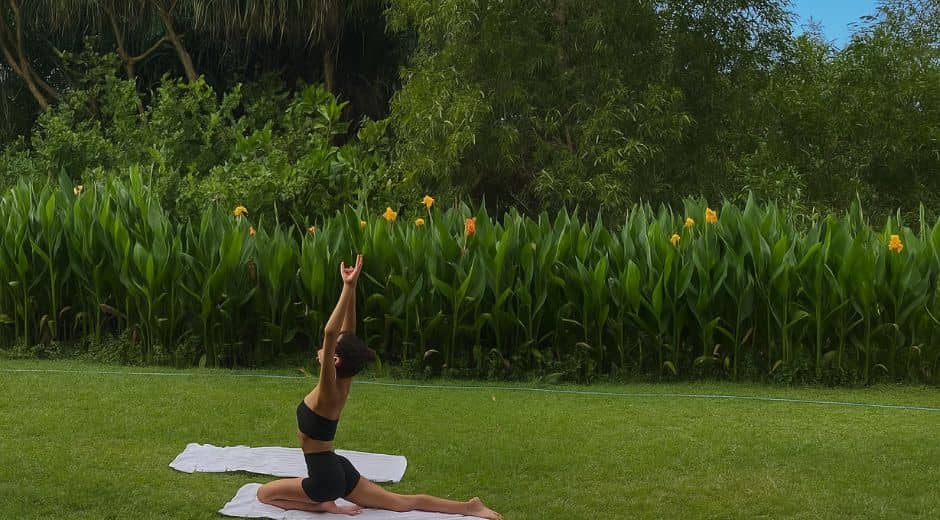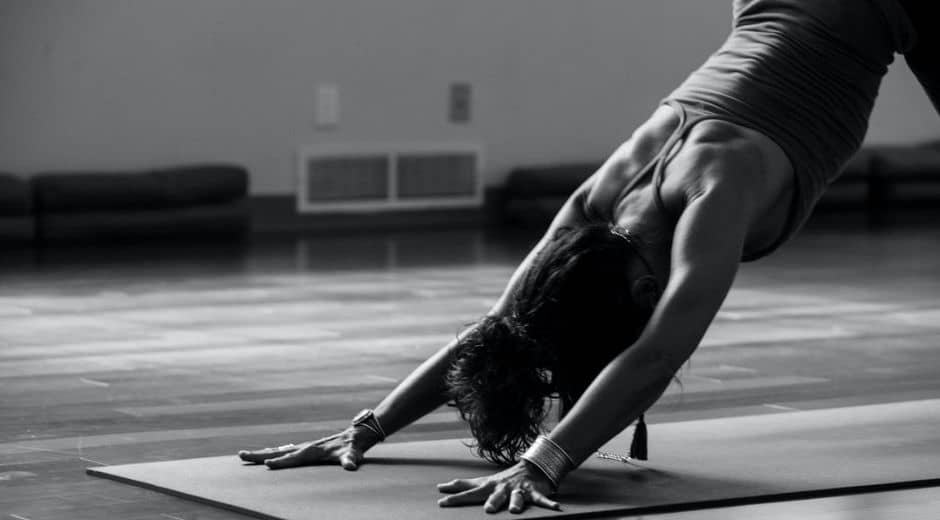The Power of Alignment: Flowing in Harmony with Your True Self
When life feels scattered or disconnected, it’s often because your thoughts, emotions, and actions are out of sync. True peace arises when all parts of you move together in alignment. It’s the quiet state where intention and action merge, creating flow that feels natural, grounded, and purposeful.
Understanding Alignment and Inner Flow
Alignment is the bridge between who you are and how you live. It’s when your beliefs, words, and choices reflect your authentic values. You no longer chase what feels forced or false—you move with ease toward what resonates deeply.
When the mind and heart work together, energy flows freely. That is alignment. It’s not about perfection but about honesty with yourself. When you act from authenticity, resistance fades and clarity returns.
As noted by Psychology Today, individuals who live in personal alignment report higher satisfaction, stronger motivation, and reduced anxiety. Living in harmony with your values is not only emotionally fulfilling, it’s essential for mental balance.
How Alignment Creates Flow
When you’re in alignment, everything feels lighter. The body relaxes, the mind quiets, and decisions become intuitive. You no longer struggle to “make things work,” because life begins to unfold naturally.
Inner flow happens when energy is not wasted on inner conflict. Instead of fighting yourself, you move in rhythm with your truth. This is the essence of alignment—effortless engagement with what feels meaningful and right.
Through this harmony, even mundane tasks can feel satisfying. Flow emerges not from doing more, but from being fully present in what you’re doing.
Signs You Are Out of Alignment
It’s easy to lose touch with your true self. Here are some signals that your inner alignment might need attention:
Constant fatigue or restlessness
Saying “yes” when you mean “no”
Feeling disconnected from your goals
Overthinking instead of acting
Seeking approval rather than authenticity
When these patterns appear, it’s a sign to pause and realign. Returning to alignment often begins with awareness—recognizing where your outer life no longer reflects your inner truth.
Daily Practices to Strengthen Alignment
Restoring alignment is an ongoing practice, not a one-time effort. The more consistent your rituals, the more grounded you’ll feel. Try integrating these into your routine:
Morning Centering
Before the day begins, take a deep breath and set an intention. Ask yourself, “What matters most to me today?” That question sets the tone for living in alignment.Truth Check-Ins
Throughout the day, notice moments of discomfort. They often signal misalignment. Pause and ask, “Am I acting from truth or habit?” This awareness gently guides you back to balance.Movement with Purpose
Physical movement—yoga, stretching, or walking—helps realign body and mind. When your body moves freely, inner alignment deepens.Reflective Journaling
Write about what feels authentic to you. Journaling transforms thoughts into clarity and exposes where you might be out of alignment.Evening Gratitude
Reflect on moments when you felt most yourself. Gratitude reinforces those aligned experiences and invites more of them into your life.
Alignment and Emotional Balance
Emotions are powerful indicators of whether you’re in alignment. Peace, joy, and curiosity often arise when your actions reflect your core values. Tension, guilt, or frustration appear when you stray from them.
Instead of ignoring emotions, treat them as guides. Each one shows you where realignment is needed. This approach transforms emotional reactivity into emotional intelligence.
Over time, you’ll discover that living in alignment doesn’t mean never feeling discomfort—it means responding to it with understanding and grace.
Alignment in Relationships
Healthy relationships depend on mutual honesty and respect. When you are in alignment, you attract connections that feel natural instead of forced. You communicate with authenticity rather than obligation.
This inner clarity helps you set boundaries with kindness. You can say “no” without guilt because you trust your truth. Relationships built on aligned energy grow stronger, lighter, and more compassionate.
To explore additional insights and mindful practices for aligned living, you can visit Zoopora.
How Alignment Enhances Creativity
Creativity thrives when the mind and heart are united. When ideas flow from authenticity rather than pressure, the results feel alive. Artists, writers, and thinkers often describe moments of deep alignment as the source of their best work.
Try approaching creative tasks not as performance but as expression. Let go of expectation and connect with what feels true. In that connection, alignment replaces effort, and flow emerges effortlessly.
Restoring Alignment Through Stillness
Silence is one of the most powerful tools for realignment. Take time each day to sit in stillness—no goals, no distractions, no noise. This quiet allows you to hear your inner guidance clearly.
In stillness, you realize that alignment is not something to find, but something to return to. It’s already within you, waiting beneath the noise of everyday life.
For more reflections on balance, inner flow, and living authentically, explore related articles on FocusMindFlow.
Conclusion: Living in Continuous Flow
Alignment is not about changing who you are, but remembering who you’ve always been. When your thoughts, emotions, and actions unite, you reconnect with your natural rhythm.
Life becomes smoother, decisions simpler, and peace more consistent. Each small act of honesty strengthens your inner compass, guiding you toward freedom.
The more you practice alignment, the more life feels effortless—like a river flowing toward its destination, calm and certain. That is the essence of inner flow.
In a world overflowing with noise, messages, and endless distractions, has become one of the rarest and most valuable skills. It’s the quiet force behind creativity, productivity, and peace. When the mind learns to stay centered, everything feels more vivid, purposeful, and connected. This is the essence of focus rituals: intentional actions that strengthen your ability to direct your attention where it truly matters.
What Is Concentration and Why Does It Matter?
Is more than just focus. It’s the refined art of bringing all your mental energy to a single point. When you concentrate, your thoughts align, your breathing slows, and your inner chatter fades. The mind becomes still but alert, like a calm lake reflecting everything clearly.
Without it , even the simplest tasks become fragmented. You jump from one idea to another, never fully completing what you started. But with it, time stretches. You feel in control, grounded, and capable of deep thought and creativity.
According to research shared by Headspace, regular mindfulness and attention practices enhance the brain’s ability to sustain it and resist impulsive distractions. This mental strength doesn’t just improve productivity—it transforms how you live.
Creating Daily Focus Rituals
Focus rituals are the foundation of mental clarity. They’re small, consistent habits that guide your attention inward. You don’t need hours of meditation or a silent retreat to strengthen it. What you need is rhythm, intention, and consistency.
Here are some powerful focus rituals to build into your day:
Morning Stillness
Begin each day by sitting quietly for a few minutes before reaching for your phone. Close your eyes and focus on your breath. This small ritual creates a mental boundary between rest and activity, grounding your mind before the day begins.Single-Task Blocks
Choose one task and commit to it fully for 25 to 40 minutes. No switching tabs, no checking notifications. When your mind wanders, gently bring it back. This trains your mental muscles in sustained.Ritualized Breaks
Instead of random pauses, take mindful breaks. Stretch, walk, or simply breathe. These mini-rituals help your brain reset, maintaining high levels of concentration throughout the day.Sensory Anchors
Use the senses to anchor focus. Light a specific candle, play soft instrumental music, or hold a calming object. Over time, these sensory cues signal your brain that it’s time to focus.Evening Closure
End the day with reflection. Ask yourself: Where did I lose focus today? Where did I maintain it? Awareness of these patterns strengthens future concentration.
How Concentration Shapes Emotional Stability
When your mind learns to stay focused, emotional storms lose their grip. A wandering mind easily falls into anxiety and overthinking. But through it , you cultivate a sense of stability. You become less reactive, more present, and better able to understand what truly matters.
By mastering it, you discover that clarity doesn’t come from control—it comes from stillness. You can witness emotions without being swept away by them. This stability becomes a source of quiet power in relationships, work, and self-understanding.
Breaking Free from Distraction
Distraction is not just a modern inconvenience, it’s a habit. Every time you shift attention impulsively, you reinforce mental restlessness. Rituals that strengthen it help rewire this habit.
Start with digital boundaries. Silence notifications, set screen limits, and dedicate specific time for online browsing. When you consciously control your attention, you stop letting technology control you.
For more insight into focus-enhancing habits and mindful productivity, visit GamingNewsHead. You’ll find practical guides designed to help you rebuild your mental discipline with ease.
The Physical Connection: Body and Concentration
Your body influences your focus more than you realize. Nutrition, posture, and movement all shape the quality of your attention. A slouched position or poor breathing pattern weakens concentration, while mindful posture and steady breath enhance it.
Try this quick ritual: sit upright, take three deep breaths, and bring your attention to your physical sensations. As your body becomes still, your mind follows. Repeating this practice regularly forms a strong body-mind connection that supports continuous concentration.
Concentration in Creative Work
Artists, writers, and musicians often speak about moments when time disappears and creativity flows effortlessly. These are states of deep concentration, where self-consciousness fades, and expression becomes natural.
To access this state, remove friction before you begin. Organize your workspace, silence your phone, and start with a clear intention. Once your mind feels undistracted, creativity blooms.
Even short bursts of pure concentration can produce better results than hours of scattered effort. Quality always beats quantity when attention is fully engaged.
Inner Rituals for Long-Term Focus
Over time, focus rituals evolve from small actions into a lifestyle. They remind you that concentration is not something you do, but something you become.
Consider integrating these deeper practices into your daily rhythm:
Digital Silence Hour: One hour each day with no screens. Use it to walk, reflect, or simply be.
Mindful Reading: Read slowly, with full attention on every word.
Creative Morning: Dedicate 10 minutes every morning to creative work before anything else.
Evening Gratitude: Review the moments you felt truly focused during the day.
Small steps, done daily, lead to lasting transformation.
Internal Stillness and the Power of Concentration
At its core, concentration teaches presence. It brings the mind back from distraction and settles it in the now. When practiced long enough, it becomes a portal to peace.
You start noticing that behind the noise of thoughts, there’s a quiet space that never changes. That’s where your true strength lies. When you anchor your attention there, even the busiest day feels spacious.
For more mindful living resources and articles on personal transformation, visit FocusMindFlow. The journey of focus begins with a single breath and deepens every time you return to what truly matters.
Conclusion: The Return to Clarity
Concentration is not about rigid control but gentle awareness. It’s about choosing where your energy flows and protecting that choice with consistency. Each focus ritual you build adds strength to your attention.
When the mind becomes steady, life becomes simpler. Tasks feel lighter, creativity feels natural, and your sense of time expands. Concentration opens the door to calm, clear, and conscious living—the essence of inner mastery.
Focus Flow Forward

Grounding Techniques for a Balanced Mind
Grounding Techniques for a Balanced Mind

Stillness as a Path to Inner Awareness
Stillness as a Path to Inner Awareness

The Power of Alignment: Flowing in Harmony with Yourself
Learn how alignment helps you reconnect with your true self, find balance between mind and action, and live in a state of natural inner flow.

The Path to Stability: Strengthening Your Inner Foundation
Explore how cultivating stability in your thoughts, emotions, and routines builds mental balance, clarity, and peace in a fast-changing world.













